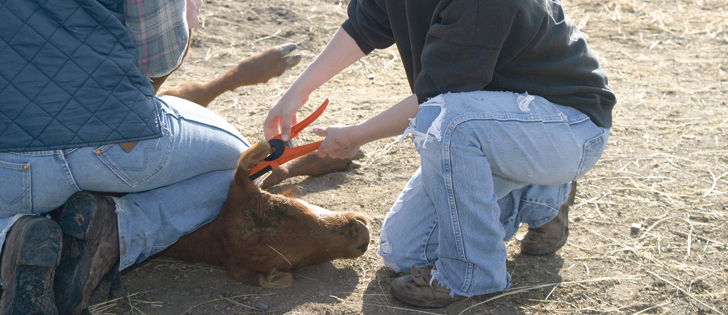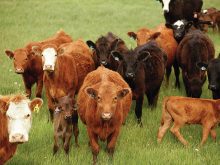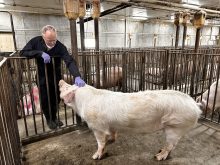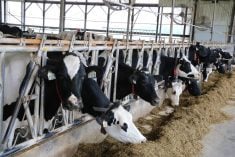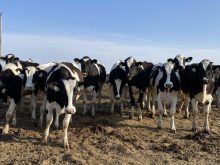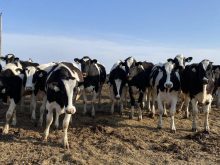Pain mitigation when dehorning and castrating cattle is a requirement under the Canadian code of practice.
It acknowledges that those procedures are painful but the study of pain in cattle is an ongoing and complicated process.
Dr. Karen Schwartzkopf-Genswein of Agriculture Canada is in the midst of a five-year study on the topic, using $1.2 million provided through the Beef Cattle Research Council.
She said the funding source speaks loudly, indicating producers’ need for information about pain control, its effectiveness and how to practically, efficiently and economically administer it.
Read Also

Farming Smarter receives financial boost from Alberta government for potato research
Farming Smarter near Lethbridge got a boost to its research equipment, thanks to the Alberta government’s increase in funding for research associations.
The practicality question is often posed to Schwartzkopf-Genswein.
Other stories in this special feature on animal health:
- Benefits of early vaccinations carry on through calf’s life: research
- Vaccinations not a cure-all, but important in prevention
- Pain relief both ethical and economical
- Nasal vaccines deliver solid infection protection
- Low-cost producers must vaccinate animals
“I think it makes my job more needed because I think we have to provide answers. Part of this is you also have to know when to say it’s not working.
“I believe in every way that pain mitigation is the right thing to do for the industry and (producers) will get any amount of grief if they don’t do something about it. The question is, you need to do the work to show what’s the best thing to do. The fact that we’re even doing the work is a message to the public … but we are sensitive to what the producers have to deal with.”
In a presentation at the Lethbridge Tiffin Conference in mid-January, Schwartzkopf-Genswein listed the pain studies completed that are now being analyzed:
- effect of time of administration of meloxicam
- effect of single does meloxicam in one-week-old calves
- effect of combination of lidocaine and meloxicam
- effect of meloxicam on multiple painful procedures
- pasture study on age and method of castration
- wound healing and the effect of various agents
Meloxicam figures highly in studies because it lasts longer than other available drugs and has a generic, orally applied form. It is one of few analgesics registered for pain relief in cattle. There were high hopes for the drug in early days of study, said Schwartzkopf-Genswein, but now researchers have learned it has limitations.
“Meloxicam isn’t hitting it out of the park. It’s not the silver bullet we thought it would be,” she said.
Research indicates pain control has positive effects on production. When oral meloxicam is used before and after castration, animals have higher feed intake, reduced E. coli shedding and reduced incidence of bovine respiratory disease.
When pain medication is applied before and after dehorning, calves show improved growth rates.
But studying pain mitigation and its effects in a commercial setting rather than a controlled environment remains a challenge, said Schwartzkopf-Genswein. Among her questions: do we have the right drugs? Do they control pain? What’s the onset and duration of the drug? What dosage is best? What is the effect of drug combinations? What’s the best mode of delivery?
“The permutations … really, it takes a lot of work to figure out what that is,” she said.
“We really don’t know the best methods yet.”
Other questions surround the age of the animal. The code of practice indicates dehorning and castration are best done when animals are young, but it isn’t known at what age cattle are least likely to feel acute pain and/or recover best from experiencing it.
Studies do show that older animals feel more pain at more times than do younger animals undergoing dehorning and castration, said Schwartzkopf-Genswein.
She said the research is worthwhile.
“We know it’s painful. That’s something we know without question. So knowing that it’s painful and knowing that people are not OK with that, I think it’s up to us to provide the right solutions to make sure that gets done.
“We can’t do it if we don’t have the drugs available. We can’t do it if they’re not registered for Canada. We can’t do it if it means that we have to handle them six times before we get something. Then it’s not practical. So we have to think about it in practical settings.”
Basic definitions:
- Anesthetics: cause lack of sensation, numbness
- Analgesics: reduce pain but do not remove sensation
- Acute pain: pain at time of procedure and shortly after
- Chronic pain: pain lasting more than two days
All about pain control
The Code of Practice for the Care and Handling of Beef Cattle contains these requirements for pain control:
Dehorning:
In effect since Jan.1, 2016:
- Use pain control, in consultation with your veterinarian, to mitigate pain associated with dehorning calves after horn bud attachment.
Castration:
In effect since Jan. 1, 2016:
- Use pain control, in consultation with your veterinarian, when castrating bulls older than nine months.
Effective Jan. 1, 2018:
- Use pain control, in consultation with your veterinarian, when castrating bulls older than six months.
Pain relief drugs approved for use on cattle in Canada:
Anesthetics: lidocaine
Non-steroidal anti-inflammatories (NSAIDS): ketoprofen, flunixin, meglumine, salysylic acid, meloxicam
Alpha 2 agonists: xylazine
Source: Dr. Karen Schwartzkopf-Genswein, Agriculture Canada
Contact barb.glen@producer.com




